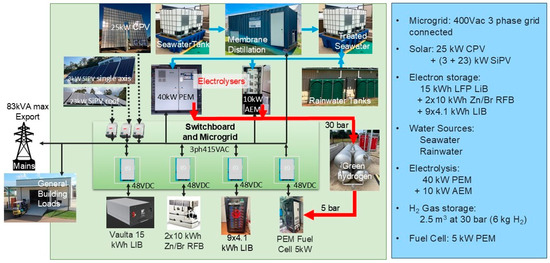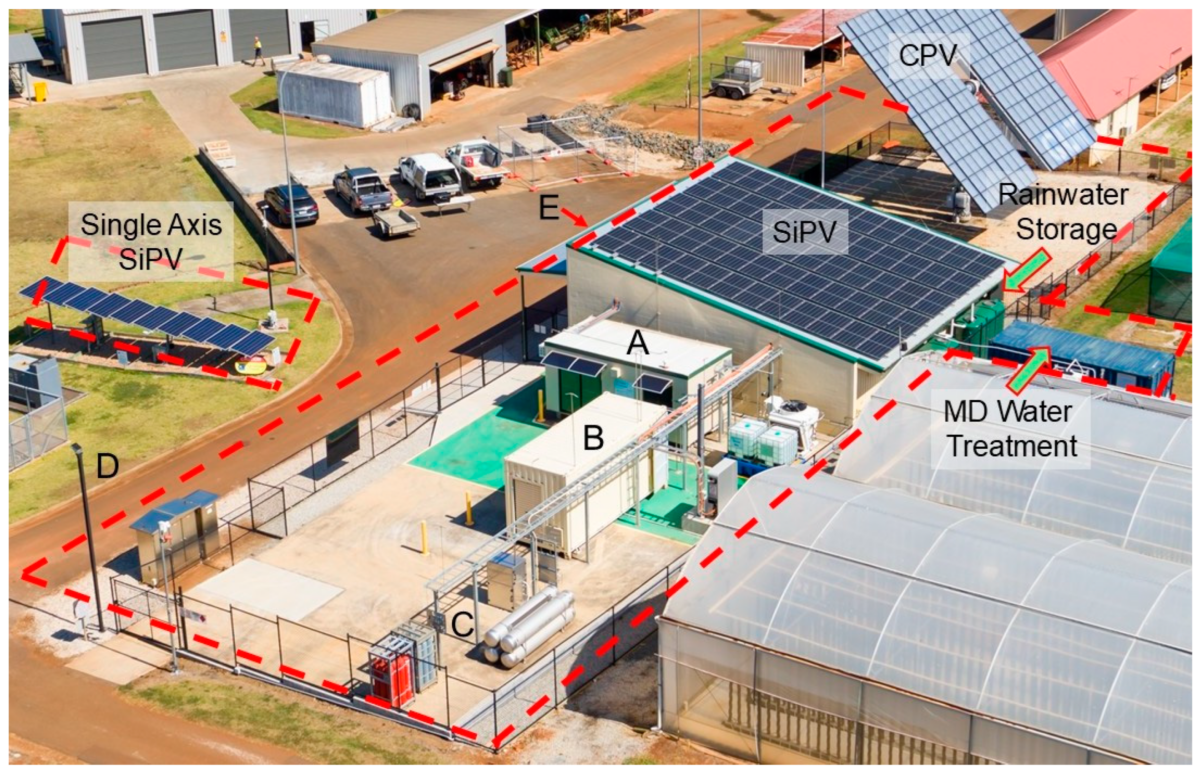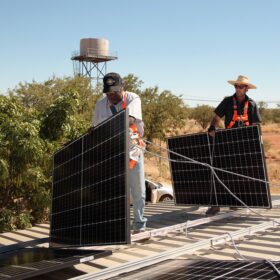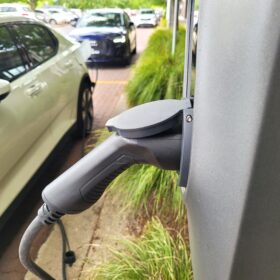The Queensland University of Technology’s (QUTs) award winning H2Xport Pilot Plant (HPP), which uses solar energy, battery storage and a microgrid to produce hydrogen from rain and non-drinkable water such as seawater, have released findings about the $7.5 million (USD 4.8 million) project’s first stage.
Located at the QUT Redlands Research Facility, 30 kilometres southeast of Brisbane, initial research results from the HPP have been published in the Energy Storage and Applications journal, the Integrated design and construction of a 50 kW flexible hybrid renewable power hydrogn system testbed and addresses the operational parameters of the 50 kW system as well as key components when commissioned.
The system testbed configuration includes three different solar technologies, three different battery technologies, two different electrolyser technologies, hydrogen storage, and a fuel cell for regenerative renewable power.
Electrical power assets at the plant include solar arrays with up to 1,000 Vdc output connected to Fronius inverters with maximum power point tracking (MPPT), and include a 25 kW concentrated solar (CPV) array prototype from Sumitomo Electric Industries, connected to a 27 kW Fronius inverter, a 3 kW single-axis ground mounted silicon solar (SiPV) array facing north, connected via a 3 kW Fronius inverter, and a 23 kW rooftop solar installation facing north, on top of a shed, connected via a 20 kW Fronius inverter.
Brisbane-based companies have supplied the battery technology, which connects to the microgrid with a 48 Vdc connection via Deye hybrid inverters, and include two 3 kW / 10 kWh ZBM2 Zn/Br Redox flow batteries, and 5 kW / 15 kWh lithium-ion batteries (LIB) from Vaulta, nine 3 kW / 4 kWh Troppos LIB from Red Earth.
The fuel cell is a 5 kW Swedish-headquartered Powercell PS5 system housed in a 20 foot container with NEL Electrolyser and liquid cooland plumbing connected to an externam chiller.
Researchers described design constraints to include the current limit of an AC microgrid, regulations for grid-connected inverters, power connection inefficiencies, and regulated hazardous area approval.
“We identify and show the resolution of systems integration challenges encountered during construction that may benefit planning for the emerging pilot, or testbed, configurations at other sites,” the scientists say.
“These testbed systems offer the opportunity for informed decisions on economic viability for commercial-scale industry applications.”
The paper explains the intention to install a fully DC microgrid and reasons why this was not viable, reverting instead to a 400 Vac 3-phase microgrid, which provides a common infrastructure backbone terminating at grid-compliant inverters on the power generation side.
QUT School of Chemistry and Physics Project Leader Professor Anthony O’Mullane said the project had successfully demonstrated that green hydrogen is a viable renewable energy source, which includes the demonstration of a portable hydrogen refuelling station for hydrogen cars and buses.
“The H2Xport Pilot Plant has shown how hydrogen can be produced from renewable resources such as solar energy to power energy storage, and non-potable water treatment,” O’Mullane said.
“It encompasses solar PV, advanced water desalination (through the work of Professor Graeme Millar), state-of-the-art battery storage, high-efficiency electrolysers, and next-generation fuel cells, representing a significant development in system level hydrogen research and development.”
O’Mullane added, the plant was successfully commissioned in December last year and is essentially a ‘proof of concept’ testbed that bridges the gap between innovative concepts and practical deployment.
“We hope that it will inspire burgeoning clean tech startups and established industry leaders to look more closely at green hydrogen,” he said.

Image: Queensland University of Technology
Fully operational since December 2024, the plant kicked off in 2018 with the help of a $3.35 million grant from the Australian Renewable Energy Agency (ARENA), and additional financial support from industry and university partners.
H2Xport Pilot Plant Manager Navin Bhardwaj said the plant fosters the development of future hydrogen experts because we offer hands-on training to researchers, engineers, and technicians.
“It’s not just a pilot plant; it’s a catalyst for accelerating the development and deployment of green hydrogen technologies while simultaneously cultivating the highly skilled workforce essential for this burgeoning industry,” Bhardwaj said.
Battery storage
QUT Queensland Energy Storage Technology Hub (QUEST Hub) Lead and Associate Professor Joshua Watts said advanced battery energy storage was a key component of the H2Xport Pilot Plant.
“H2Xport serves as a wider platform for industry and academic partners to test, validate and refine new technologies and products and include battery companies such as Vaulta Batteries and Lavo Hydrogen Batteries, who have leveraged the plant’s capabilities to accelerate their own product development cycles,” Watts said.
“The H2Xport Pilot Plant has created as an excellent platform for collaboration and cross training between industry and academia, with the industry partners playing a key role in the success of the project.”
The H2Xport Pilot Plant won the 2025 Smart Energy Excellence Awards Zero Carbon Hydrogen category in April 2025.
This content is protected by copyright and may not be reused. If you want to cooperate with us and would like to reuse some of our content, please contact: editors@pv-magazine.com.









By submitting this form you agree to pv magazine using your data for the purposes of publishing your comment.
Your personal data will only be disclosed or otherwise transmitted to third parties for the purposes of spam filtering or if this is necessary for technical maintenance of the website. Any other transfer to third parties will not take place unless this is justified on the basis of applicable data protection regulations or if pv magazine is legally obliged to do so.
You may revoke this consent at any time with effect for the future, in which case your personal data will be deleted immediately. Otherwise, your data will be deleted if pv magazine has processed your request or the purpose of data storage is fulfilled.
Further information on data privacy can be found in our Data Protection Policy.